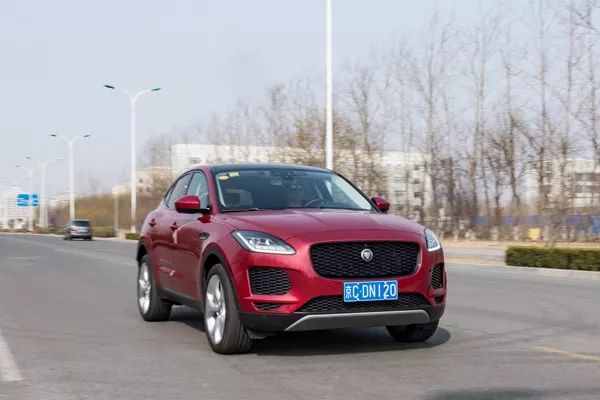Tibet is the place closest to the sky and farthest from the hustle and bustle. For many, it is a mysterious and distant existence. Everyone may have a dream of going to Tibet, to see the Potala Palace, “the highest palace in the world”, the Jokhang Temple, “the holy place for practitioners”, and the sheep of “one of the three holy lakes in Tibet”. Zhuoyong Lake, “Roof of the World” Mount Everest…

The scenery of Tibet is unmatched by many places. There are as many as 8 routes to Tibet that are well known to the public. Although the saying goes, “All roads lead to Rome”, which road to Tibet has the best scenery and is the most accessible How about satisfying your self-driving addiction? Today, the off-road tribe has selected a route that is most suitable for the first self-driving trip to Tibet from the self-driving south and north routes recommended in the past, so that you can realize a great “Tibet Dream”. Friendly reminder: There are easter eggs in the text!

Northern Sichuan-Tibet Line (National Highway 317) – off-road old cannon pilgrimage adventure trip!
Features of the itinerary: Self-driving experience “the world’s highest postal route”
I believe that many friends have long been familiar with the Sichuan-Tibet South and North Lines! To put it simply, the Northern Sichuan-Tibet Line is 2,412 kilometers long. Driving on National Highway 317, it passes through Zheduo Mountain with “nine curves and eighteen bends” and Queer Mountain, which is known as “the first danger in Sichuan-Tibet”. The road surface is basically a sandy road section. , and is often destroyed by mudslides and landslides, and it is difficult for cars to pass. It can be said that it is the most difficult route to enter Tibet. Compared with the southern route, the northern route passes through mostly pastoral areas (such as the Nagqu area), with high altitude, sparse population, and pristine and magnificent scenery. It can be called a self-driving route specially developed for off-road veterans or experienced drivers!

Plateau lakes, snow-capped mountains, and hot springs are densely covered along this line. You can also visit “the largest Buddhist academy in the country” Seda Larung Wuming Buddhist Academy and “Tibetan Cultural Encyclopedia” Dege Sutra Printing House to experience the magnificent and unique original scenery and richness. The beauty of colorful Tibetan cultural fusion. In addition, you also have the opportunity to experience the “world’s highest postal road”, and follow the Chinese postal transport vehicles to climb over the mountains and enjoy the extraordinary and beautiful scenery! For detailed self-driving route recommendations, you can view:
Want to fully appreciate the cultural beauty of Tibet? Hardcore cross-country veterans teach you how to play the northern Sichuan-Tibet line!
Follow the “a touch of postal green on the Sichuan-Tibet line” and experience the unique self-driving gameplay of the postal road in Ganzi Prefecture

As the saying goes, there have been many dangerous peaks in the southwest since ancient times, and the scenery is different in four seasons. On the way from Chengdu to Tibet, we first pass through Aba Prefecture in Sichuan Province, where there are many mountains. Despite its small size, there are more than 50 peaks above 5,000 meters above sea level. Among them, there are four mountain peaks lined up in a line, slim and graceful, this is Siguniang Mountain, which is revered as the “Sacred Mountain” by the local Tibetans. Because of its special geographical location and climatic conditions, it provides an ideal living environment for all kinds of animals and plants. The famous hometown of giant pandas – Wolong Nature Reserve is located here, and it is also one of the must-see attractions for parent-child travel!

In addition, most of those who choose to travel by car on the Northern Sichuan-Tibet Line will stop at Seda! There are ascetic monks and simple Tibetans here; there are legends of the golden horse here, and it is also the habitat of the snow-covered gods and orphans; here are grasslands, lakes and mountains, as well as plateaus, celestial burials and vultures; there is also the world Go to the largest Buddhist academy – Wuming Buddhist Academy. When you drive into this small town, you will definitely be amazed by the crimson red Tibetan-style bungalows in front of you! These are the dormitories built by the lamas (male monks) and Juem (female monks) who practiced and studied in Seda. From a distance, the entire mountain range merged into a red ocean.
Sichuan-Tibet South Line (National Highway 318) – known as “Humanistic Landscape Avenue”!
Itinerary features: self-driving experience “the most beautiful landscape avenue” Linla high-grade highway
It is no exaggeration for the editor to say that the southern Sichuan-Tibet line is the route to Tibet with the most landscapes along the way. Departing from Chengdu, the birthplace of Bashu culture, passing through Kangding, the “horse racing”, Xindu Bridge, the “photographer’s paradise”, Litang, the “highest city in the world”, the colorful Ranwu Lake, the vast Bangda grassland, and finally arrived at the “Holy Land” Lhasa. The whole journey is 2140 kilometers, and the altitude difference is relatively large, fluctuating from 2000 meters to 4000 meters. However, the whole route sometimes meanders along the river in the canyon, sometimes runs wildly on the grassland, and sometimes turns into a winding mountain road with nine twists and turns-this road gives birth to N different self-driving experiences!

If you only talk about the beautiful scenery along the way, it is definitely the best route for entering Tibet for the first time! However, compared with the road conditions of the northern Sichuan-Tibet line, the southern Sichuan-Tibet line passes through the three mountains and three rivers in the Hengduan Mountains. There is a 800-kilometer-long “groove-shaped geological broken road section” that is constantly rising. Almost all natural hazards on this line are concentrated in this paragraph. Veteran drivers with superb driving skills and rich driving experience may not be afraid of it. However, friends who have no off-road + outdoor experience should not just look at the beautiful scenery in the photos, but also consider the actual feasibility. Off-Road Tribe has previously released a detailed self-driving guide related to the Sichuan-Tibet South Line. You can refer to:
Want to fully appreciate the cultural beauty of Tibet? Hardcore cross-country veterans teach you how to play the northern Sichuan-Tibet line!
A map to tour Tibet? The editor found the most beautiful niche route that does not charge tolls

As a little reminder from the editor, on the way of self-driving on the southern Sichuan-Tibet line, there is another natural landscape located at the junction of Sichuan, Yunnan, and Tibet. It is the Jinsha River Dawan in Meili Snow Mountain National Park. There are high mountains and deep valleys, mountains and mountains, and precipitous cliffs. The mighty Jinsha River comes from the hinterland of the Tibetan area through the mountains and valleys. When it is about to break through the fortress of Yunnan and Sichuan, it seems that it wants to relieve the fatigue of the long-distance travel, so it slows down and walks around the pyramid-like sun cone peak painting. It formed a “C”-shaped arc. Who would have thought that this inadvertent impromptu work would actually create a geographical wonder in the world!

Finally, since we drove thousands of miles to Lhasa, the “Holy Land”, and saw the Potala Palace, the “highest and most majestic palace in the world”, of course we must not forget to check in at the Jokhang Temple. Jokhang Temple, as the end point of Tibetan Buddhist pilgrimage, was established by Songtsen Gampo to commemorate Princess Chizun’s entry into Tibet. The biggest attraction of the entire monastery is the 12-year-old statue of Sakyamuni brought by Princess Wencheng when she entered Tibet. The reason why Lhasa is called “Holy Land” is related to this Buddha statue. Climbing to the platform on the third floor of the Jokhang Temple, you can also look at the Potala Palace and overlook the Jokhang Temple Square.
Last but not least, I want to tell you a piece of good news. The cross-country tribal Sichuan-Tibet line survey team has set off for Ya’an today. Next Monday, our cross-country tribe’s WeChat editor will also join the survey team. After completing the whole journey from Ya’an to Lhasa, we will bring you the Sichuan-Tibet line survey activities at any time forward dynamics. If you want to know the most authentic and fresh cultural and natural customs along the Sichuan-Tibet line for the first time, please focus on the off-road tribes in the next half month.




